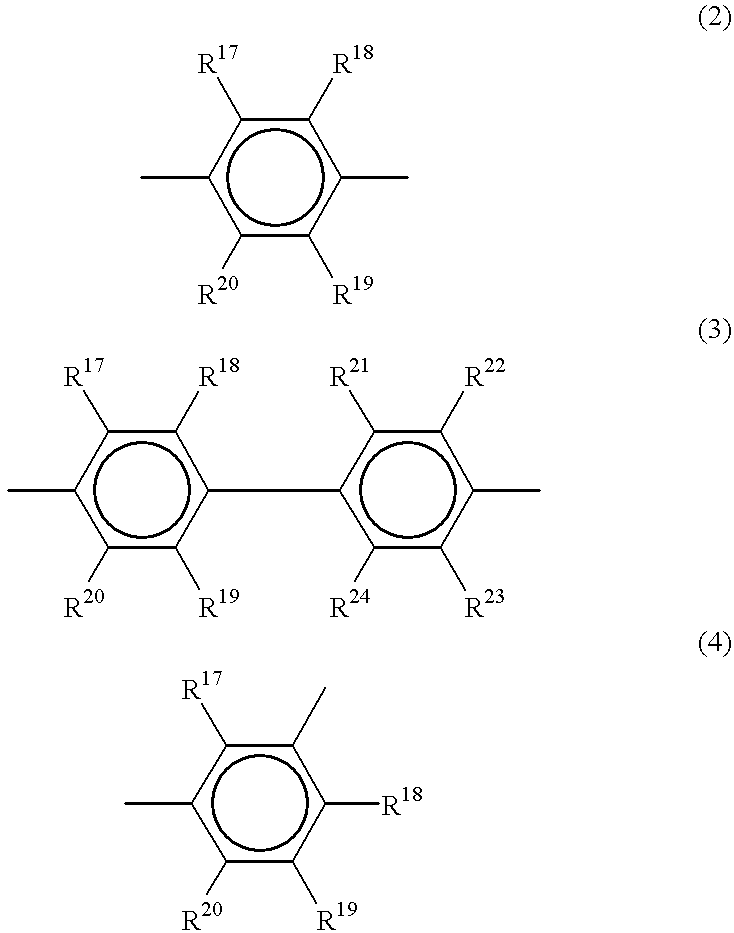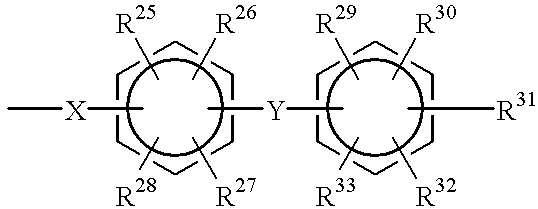Polyarylene copolymers and proton-conductive membrane
a technology of polyarylene and proton conductive membrane, which is applied in the preparation of carbonyl compounds, organic chemistry, chemistry apparatus and processes, etc., can solve the problems of insufficient inorganic compounds, inability to replace such aqueous soluble-form electrolytes with solid electrolytes, and insufficient adhesion to the electrod
- Summary
- Abstract
- Description
- Claims
- Application Information
AI Technical Summary
Problems solved by technology
Method used
Image
Examples
reference example 2
[Synthesis of 4,4'-Bis(4-chlorobenzoyl)diphenyl Ether]
A solution prepared by dissolving 42.6 g (250 mmol) of diphenyl ether and 87.5 g (500 mmol) of 4-chlorobenzoyl chloride in 75 ml of methylene chloride was placed in a three-necked flask equipped with a dropping funnel, stirrer, and three-way cock. In a dry nitrogen atmosphere, a suspension obtained by dispersing 83.3 g (625 mmol) of anhydrous aluminum chloride in 75 ml of methylene chloride was added dropwise to the solution with stirring and under cooling at 10.degree. C. or lower over 2 hours to react the reactants. The red-brown solution obtained after the dropwise addition was continuously reacted at room temperature for 10 hours and then poured into an ice bath containing hydrochloric acid (a mixture of 2 kg of ice and 200 ml of aqueous hydrochloric acid solution) to cause precipitation. The precipitate was recovered by filtration and then dried. The powder obtained was pulverized and washed with 1 N aqueous hydrochloric aci...
example 1
Into a three-necked flask equipped with a ball condenser and a three-way cock were introduced 193.5 g (540 mmol) of 2,5-dichloro-4'-phenoxybenzophenone, 28.64 g (60 mmol) of 3,4'-bis (4-chlorobenzoylamino) diphenyl ether, 11.7 g (78 mmol) of sodium iodide, 11.8 g (18 mmol) of bis(triphenylphosphine)nickel dichloride, 63.0 g (240 mmol) of triphenylphosphine, and 94.1 g (1.44 mol) of zinc. This flask was placed on a 70.degree. C. oil bath and the atmosphere in the flask was replaced with nitrogen. Thereafter, 1,000 ml of N-methyl-2 -pyrrolidone was added to the mixture under a nitrogen atmosphere to initiate a reaction. The reaction mixture was reacted for 20 hours and then diluted with 500 ml of N-methyl-2-pyrrolidone. The resultant reaction mixture which had undergone polymerization was poured into a 1:10 mixture of hydrochloric acid and methanol to precipitate polymer. The precipitates were washed, recovered by filtration, and then dried in vacuo. Thus, 173.3 g of a white powder wa...
example 2
Reaction was conducted in the same manner as in Example 1, except that the amounts of the feed monomers, i.e., 2,5-dichloro-4'-phenoxybenzophenone and 3,4'-bis(4-chlorobenzoylamino)diphenyl ether, were changed to 172.00 g (480 mmol) and 57.27 g (120 mmol), respectively. As a result, a polymer was obtained in an amount of 177.3 g. It had a weight-average molecular weight of 133,500.
A 150 g portion of the polymer was sulfonated in the same manner as in Example 1 to obtain 180.5 g of a sulfonated polymer. An IR spectrum thereof is shown in FIG. 2.
PUM
| Property | Measurement | Unit |
|---|---|---|
| temperatures | aaaaa | aaaaa |
| mol % | aaaaa | aaaaa |
| mol % | aaaaa | aaaaa |
Abstract
Description
Claims
Application Information
 Login to View More
Login to View More - R&D
- Intellectual Property
- Life Sciences
- Materials
- Tech Scout
- Unparalleled Data Quality
- Higher Quality Content
- 60% Fewer Hallucinations
Browse by: Latest US Patents, China's latest patents, Technical Efficacy Thesaurus, Application Domain, Technology Topic, Popular Technical Reports.
© 2025 PatSnap. All rights reserved.Legal|Privacy policy|Modern Slavery Act Transparency Statement|Sitemap|About US| Contact US: help@patsnap.com



